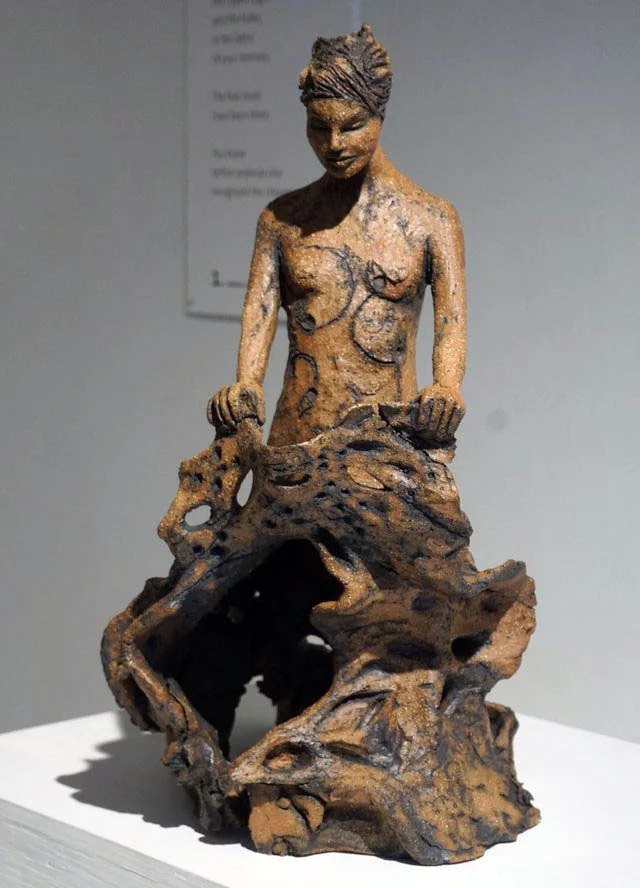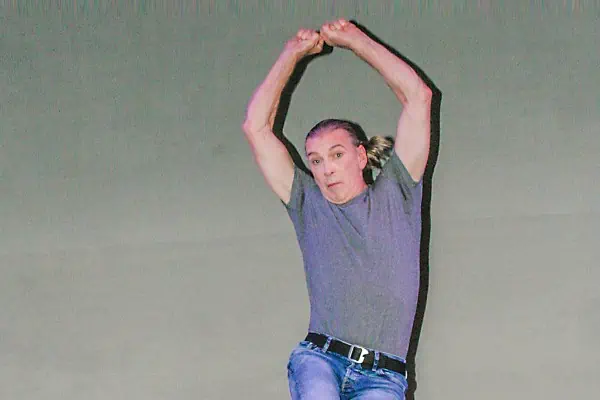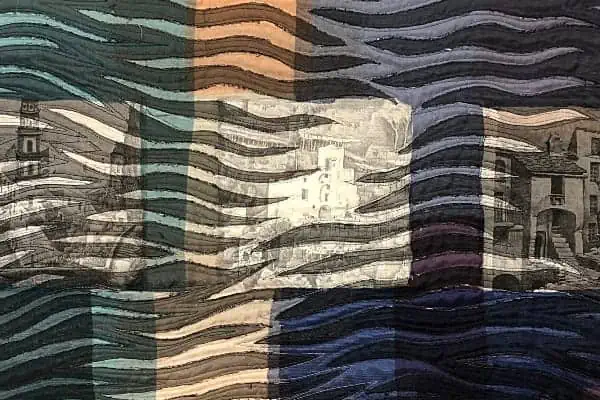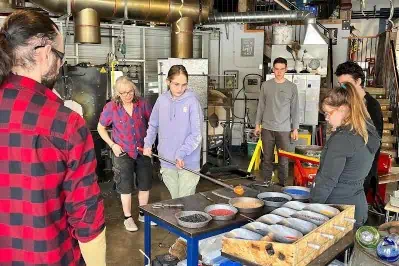
It seems to me that we struggle for good stories about death. In the long goodbye: Mother had Alzheimer’s, Sandra Grace Storey has generously, and honestly, taken us to a raw and vulnerable place in her own life. She takes us to a place where stories germinate, where we tell them because we need them, because in some ways we can’t help it. How beautiful and true a story can we make when life tests us with the kind of difficulty we experience in attending a beloved parent’s death through this terrible disease? Storey’s story, made by hand, in the full presence of light and shadow, shows us one way.
Storey guides the audience through a sequence of nine sculpture-poem pairings, which trace her experience of her mother Olive’s progress through Alzheimer’s to death. In the first, made of grogged clay, grainy with pieces of pre-fired clay within it, a female figure lifts a skirt that’s full of holes. The skirt is cracked where she holds it. This piece struck me with the realization that sculpture inhabits light differently than painting. Whereas a painting demands even light to create illusions of shadow, a sculpture’s actual cast shadow tells an important part of its story. It’s a broken darkness the figure reveals beneath her skirt. The wall text refers to “the frayed edges and the holes in the fabric of your memory” and acknowledges how difficult it must have been to live with the first symptoms of Alzheimer’s, when only Olive guessed there was something wrong.
The second text reads, “you began to separate from the You I knew.” In these next two sculptures, Storey pairs smooth porcelain arms and heads with a grogged clay body, like a dress. The two clays express this separation. This dress has more and more holes, and contrasts with the oddly serene face. Holes in the hands, though, take even these calm parts of the figure to a place of woundedness.
How hard is it to look after someone whose mind is playing tricks on them like that, someone who is an adult, who has occupied the primary role of authority in one’s own life? The next texts explore this, as the porcelain parts become smaller, an arm and a face, reducing to just one arm, with a gesture thrown out from the maelstrom of torn clay. But if the hole-riddled clay is a storm, it’s also a place of spirit, with its lines and patterns evoking time and the wind.
The next texts offer a glimpse into the pain and grief of leaving her mother in a locked ward, when she didn’t want to stay there. It is not easy to answer how to care for a person dying of Alzheimer’s. How does a person live this death? How can we support a person in living this death? And how can we have our own lives at the same time?
These next two pieces still have faces, but dissolve more and more into the storm.
The first six pieces stand, but the last three kneel, then lie down. The kneeling one is accompanied by the text, “I think at this point you would have chosen to go for a walk.” The second last one still has a bit of face and hand, and in the last, the grogged clay forms just a curled-in form of holes and lines.
Storey shares her vision of a red hawk growing from this husk of her mom. At the moment of Olive’s death Storey could feel her “taking off in a rush of wind and feathers.”
It’s worth looking at the comments book and reading the words offered by people who knew Olive. People say in a variety of ways how they have found this show useful to them. This body of work is a gift deeply appreciated. The crowd who attended Storey’s artist talk on Jan. 7 attest to this exhibiton’s reach. Sandra Grace Storey has achieved something important here.
The long goodbye can be viewed at the Yukon Arts Centre Community Gallery until Jan. 28, Monday to Friday 10 a.m. to 5 p.m., and one hour before shows in the theatre.




